The hearts and minds behind the art are captured in a unique State Library of Queensland collection.
The James C.Sourris AM Collection of Artist Interviews, filmed over the past 12 years, has been brought to the gallery walls in an exhibition with a difference, curated by contemporary Australian art expert Julie Ewington.
Meet the artists highlights the 35 digital stories along with artwork and studio materials from 8 leading Queensland artists: Vernon Ah Kee, Luke Roberts, Dr Fiona Foley, Judith Wright, Leonard Brown, Anne Wallace, Sandra Selig and Eugene Carchesio.
The distinguished artists and art world figures interviewed as part of the ongoing series include Andrew Arnaoutopoulos, Dr Philip Bacon, Richard Bell, Peter Bellas, Vivien Binns, Lawrence Daws, Sebastian Di Mauro, Michael Eather, Dr Bonita Ely, Joe Furlonger, Helga Groves, Doug Hall, d Harding, Jennifer Herd, Pat Hoffie, Gordon Hookey, Ray Hughes, Peter Kennedy, Laurie Nilsen, William Robinson, Gareth Sansom, Gordon Shepherdson, Ian Smith, Madonna Staunton, Judy Watson, Normana Wight and William Yang.
The artists share their diverse origin stories and paths to prominence in the Australian art world, what inspires them, and how they make their art. Experience a remarkable slice of Queensland art memory in this free exhibition, open until 9 July.
Here's a taste of some of those fascinating stories:
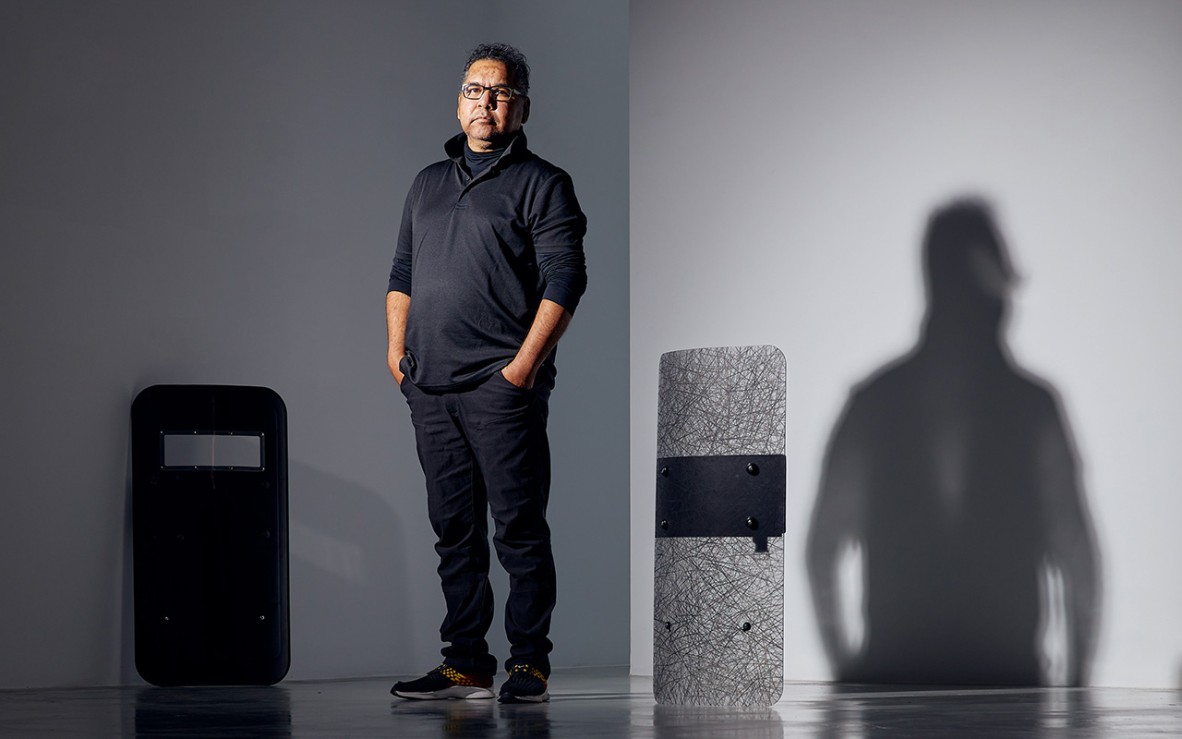
Contemporary artist Vernon Ah Kee redrew large-scale portraits of extended famly members whose photos he discovered in the Tindale Genealogical Collection at State Library. Photo by Joe Ruckli.
Drawing on discipline
Vernon Ah Kee
Vernon Ah Kee has been drawing since his childhood in Innisfail and Cairns.
Ah Kee sat for the first of the Sourris collection interviews, in December 2010. He recalled teaching himself how to draw from Spider-Man comics … ‘knowing that if I kept doing this, I would get better’.
“None of us are born being able to draw well but we are born loving it, and that’s all it takes, really. Building any kind of discipline into your life is all about racking up the hours. Having a passion for that thing helps. I really appreciate the obsessive way I went about it now … The passion for it has never really left me.”
Ah Kee is a member of the Kuku Yalandji, Waanji, Yidinji, Koko Berrin and Gugu Yimithirr peoples. One of his projects was to redraw large-scale portraits of extended family members whose photographs he discovered in the Tindale Genealogical Collection 1928-1960 at State Library of Queensland. Anthropologist Norman Tindale took the photos on Palm Island, where Ah Kee’s grandparents were forcibly relocated in the 1920s and 1930s. Ah Kee says of his drawings of his grandfather as a young man: “It’s like I’m finding out more about him every time I make a line on his face.”
ProppaNOW, the urban Aboriginal contemporary art collective that Ah Kee co-founded in 2003, was awarded the Jane Lombard Prize for Art and Social Justice in 2022. The judges lauded proppaNOW as a model for political empowerment throughout the world. As part of their prize, the Brisbane collective will host an exhibition of their work and undertake a short-term residency at The New School in New York in late 2023.
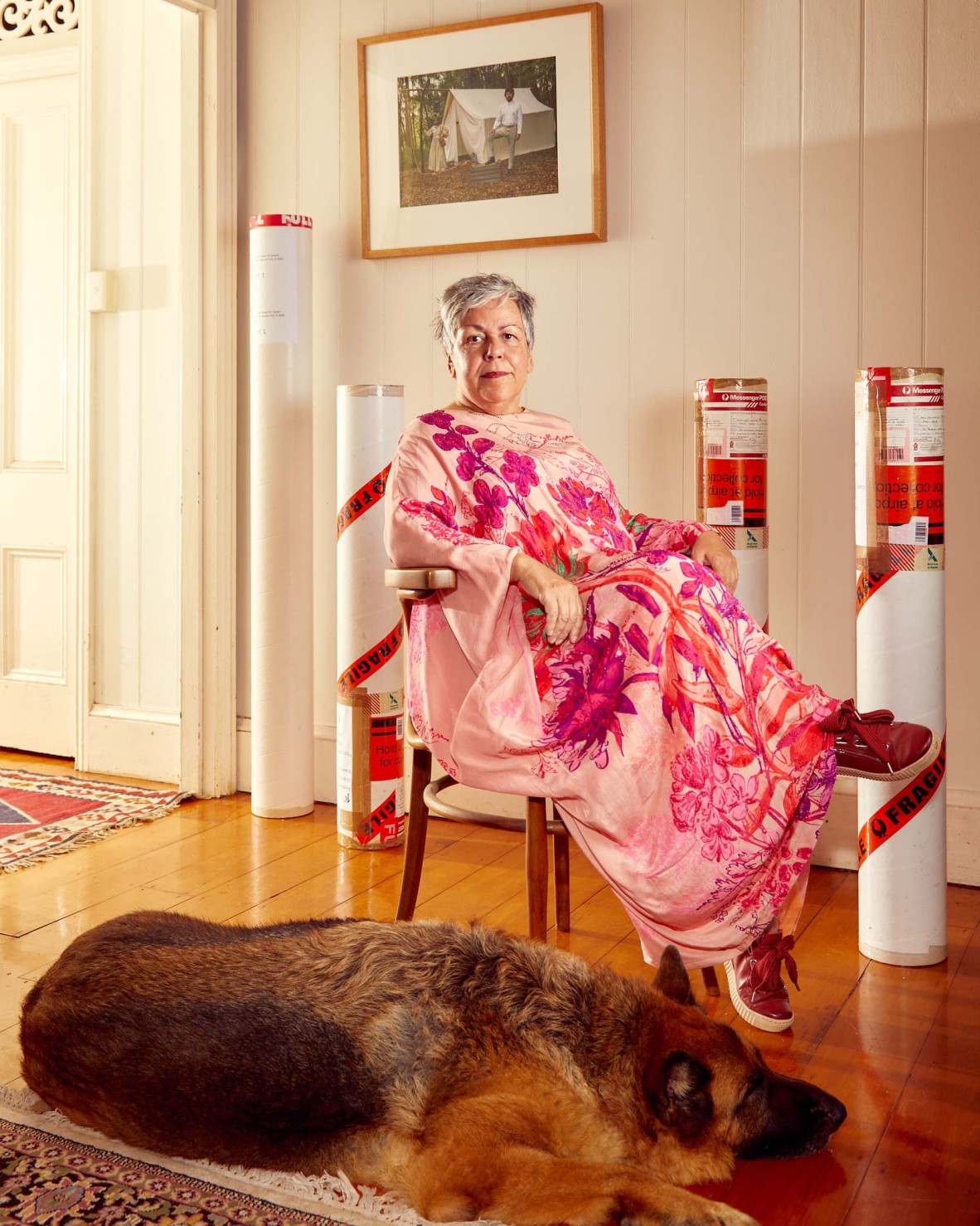
Dr Fiona Foley's historical research at State Library has inspired artworks and publications that lay bare injustices towards Aboriginal and Torres Strait Islander peoples. Photo by Joe Ruckli.
Unearthing hidden history
Fiona Foley
Hidden histories intrigue First Nations artist and writer Dr Fiona Foley.
“I have a strong sense of justice and wanting the history of Australia to be told honestly,” the Badtjala woman from K’gari says in her Sourris collection interview.
Foley’s historical research at State Library of Queensland has inspired artworks and publications that lay bare injustices towards Aboriginal and Torres Strait Islander peoples. Her art aims for ‘that aha moment’ that reveals to the audience something about their culture and their sense of what Australia is. “It can be jarring to them to uncover some of these histories,” she says.
Foley, the inaugural Monica Clare Research Fellow at State Library, is one of Australia’s leading public art makers. Black Opium, her striking sculpture of 777 poppy heads suspended in an infinity formation from the Library’s fourth-floor ceiling, was inspired by her doctoral research. Examining records of the devastating legislative response to the use of opium to coerce Queensland farm labourers, she found her Badtjala ancestors on K’gari had been written out of history. The research was the basis for her 2020 book, Biting the Clouds, awarded the Queensland Premier's Award for a Work of State Significance.
Foley, an Adjunct Professor with the Queensland College of Art at Griffith University, has spent decades challenging preconceptions about Indigenous art and fighting for a space for urban Aboriginal artists. Her work spans paintings, drawings, print making, sculpture, installation, film, soundscapes, photography and set design – a diversity she has intentionally cultivated since art school, where she did a double major in sculpture and print making.
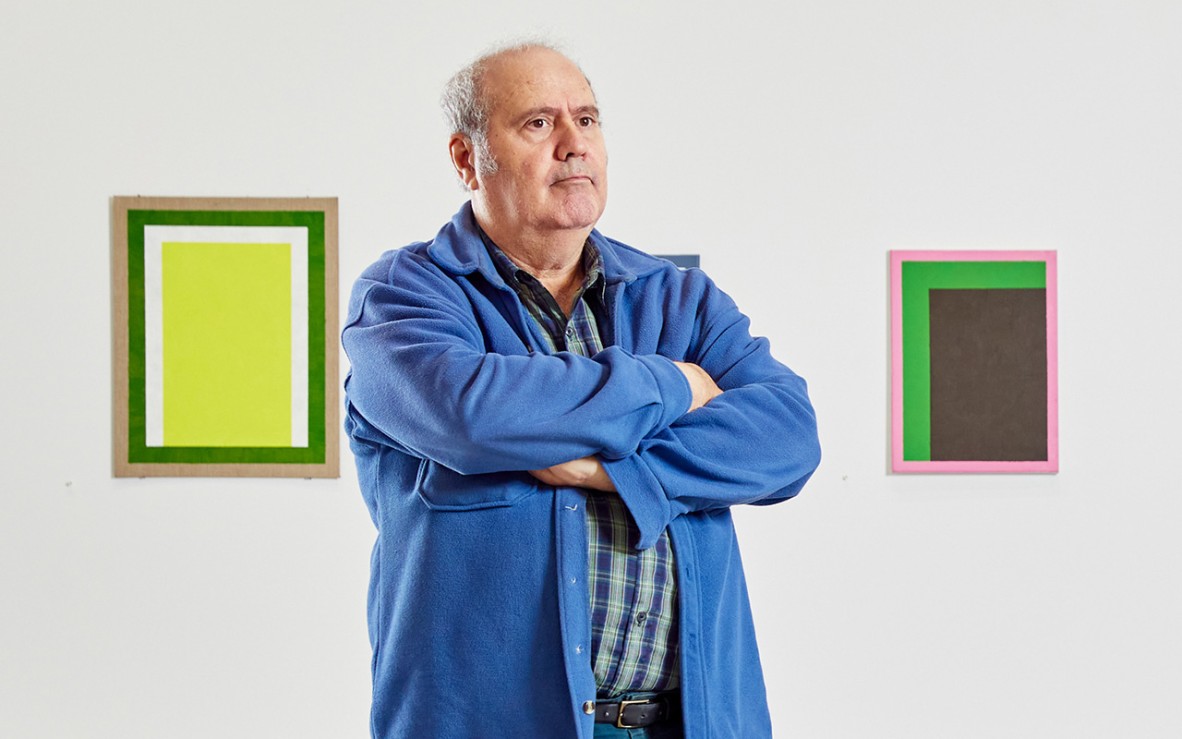
Brisbane contemporary artist Eugene Carchesio is celebrated for his small-scale drawings and sculptures: "The more you look at something, the more there is to look at." Photo by Joe Ruckli.
Inspiration in the everyday
Eugene Carchesio
Self-taught artist Eugene Carchesio studied architecture before his rise to prominence on the Australian contemporary art scene.
Carchesio is celebrated for his watercolours and minimalist constructions using matchboxes, paper and cardboard. “I've just been in love with matchboxes, the fact that there's a space inside them and they're like small rooms … Just by themselves, they're sculptural, architectural elements,” Carchesio says in his Sourris collection interview.
Also an experimental musician, Carchesio pays close attention to shadow, light and sound in his work, moving between watercolours, drawings, collages, assemblages and sculptures as the mood takes him. “It depends on what I'm feeling that day. Sometimes, work has to be tactile,” he says.
The everyday has the power to inspire Carchesio. Walking for hours each day around Tokyo on an artist residency in the 1990s, he looked down at a decaying leaf. It was the start of his Dead leaves of Tokyo series, which is part of the QAGOMA collection.
“I knew what I had to do for the next three months, and that was every day … at the end of my walk, I'd find a leaf and that would represent my snapshot of where I'd been for the day,” he says. “And for the next few hours every night at the kitchen table, I would just be drawing this leaf and thinking about the day, this process of my journey through that. The colours fade, yet part of the leaf still has that energy of life, the grain. And the more you look at something, the more there is to look at.”
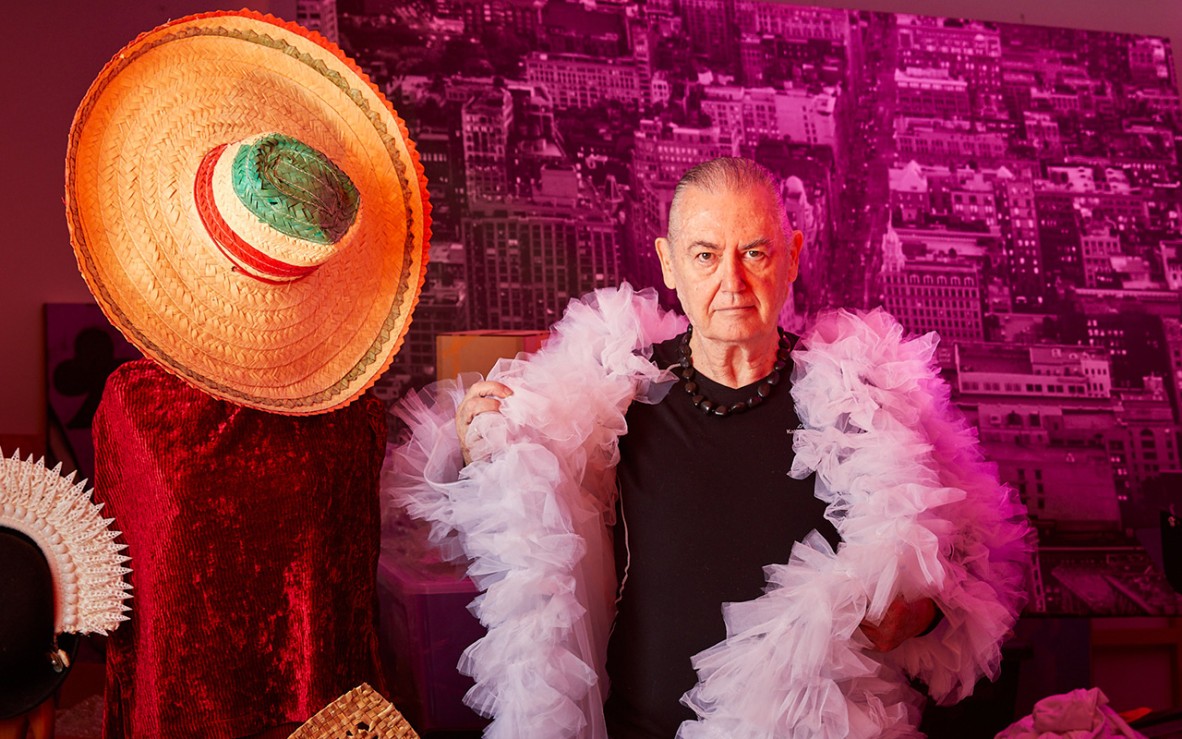
Brisbane contemporary artist Luke Roberts on his childhood in Alpha, Central Queensland: " I identified with the rejected, and with the unique, and with the special, and with the odd, and with the curious." Photo by Joe Ruckli.
From Alpha to Alice
Luke Roberts
Photographic performance artist Luke Roberts salvaged a love of collecting from the isolation of growing up as a gay Catholic Queenslander in the outback town of Alpha.
“I had this hunger for wanting to know where we came from. I identified with the rejected, and with the unique, and with the special, and with the odd, and with the curious,” Roberts says in his Sourris collection interview. “Right from the beginning I’ve dared to do things that other people haven’t done. They haven’t necessarily been seen as being relevant at the time, but these days the gap is less wide …”
Extra-terrestrial spiritual leader Pope Alice, who emerged on the Queensland art scene 40 years ago, is the highest profile of Roberts’ alter egos, and comes with an elaborate mythology. The Brisbane-based artist and social activist has shown a collector’s eye for the future in preserving eclectic items that relate to his practice. Pope Alice’s satin-lined robe and two extravagant costumes Roberts wore at Sydney Mardi Gras between 1999 and 2011 are held in State Library’s Luke Roberts Archive.
Along with his digital story, State Library’s Meet the artists exhibition features Roberts ephemera including postcards of his ground-breaking 1970s performance persona, Alice Jitterbug. They sit alongside Roberts family photos, an Alpha centenary T-shirt, sombrero and self-portraits. Roberts has returned to Alpha many times to reimagine his childhood. Luke’s World, a photographic work from his AlphaStation/Alphaville project, was produced especially for the exhibition.
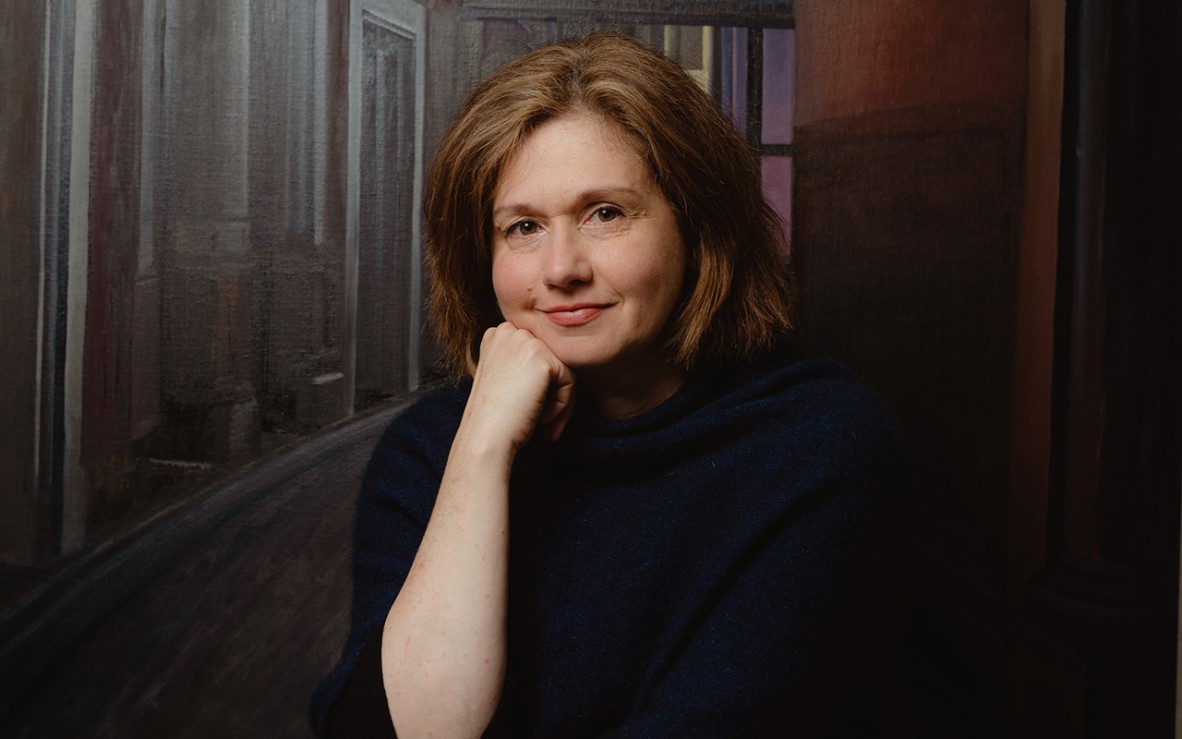
Melbourne-based contemporary artist Anne Wallace's fascination with the mid-century aesthetic was inspired by her grandmothers' distinctly different homes in Brisbane. Photo by Yaseera Moosa.
Words, music and time travel
Anne Wallace
As a young artist, Anne Wallace could be found at State Library of Queensland photocopying book covers and images that would inspire her paintings.
Photocopied pictures of the poet Dylan Thomas adorned the bedroom walls of this 1980s Brisbane teenager, who had read her mum’s copy of Portrait of the Artist as a Young Dog, a collection of Thomas’s short prose stories. She was captivated by the legend. “I wanted to be like Dylan Thomas, you know, sitting and doing all of this work. And it was kind of crazy in a way, because I think I started to put a lot of pressure on myself to somehow become an artist and make a lot of work by the time I was 20.”
In her Sourris collection interview, filmed in 2015, Wallace talks about the books that inspired her as a young art student, the importance of music in her creative process, and studying at The Slade in London on a Samstag Scholarship. “I think when you go to art school, you often learn more in a way from your fellow students than anything else,” she says.
Many of the Melbourne-based artist’s realist paintings evoke pop culture, 1950s Hollywood films and crime noir. She traces her fascination with the mid-century aesthetic back to a happy childhood visiting the very different homes of her grandmothers, in the Brisbane suburbs of Greenslopes and Holland Park. “When I would visit it was like going back in time ... those houses and those different types of environments made their way into my work.”
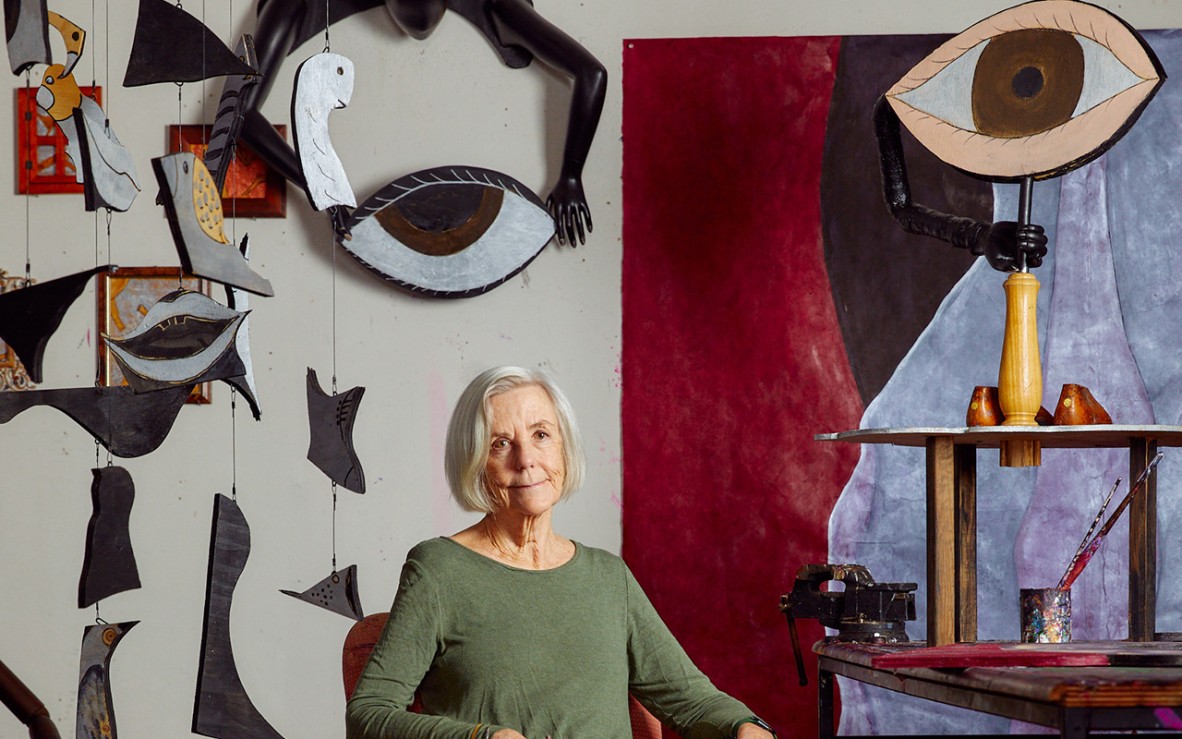
Judith Wright was a ballerina with the Australian Ballet before her distinguished career in contemporary art. Photo by Joe Ruckli.
Artistic pirouette
Judith Wright
Eyes have wings, and fantastical hybrid creatures cast eerie shadows in Brisbane artist Judith Wright’s surreal installations.
A former dancer with the Australian Ballet, Wright brings a theatricality to her painting, drawing, video, sculpture and installation works, fusing the otherworldly and the ordinary.
Wright, who grew up in Tewantin, performed with the Australian Ballet for four years from age 16. A child who always made things, including transforming tiny plastic dolls from Woolworths into mermaids with plasticine tails, her move to visual art was a natural one after leaving the ballet to have her first child. “I lived in a whole imaginary world very similar to what I’m doing now,” she says in her Sourris collection interview. “I think my practice now has gone full circle.”
Many of her works memorialise her daughter, Nicole, who died as a baby. Grief and longing pervade those works. “I think what I try to do is to talk about what it is to be human, and the fragility of that experience,” she says.
Wright transforms mannequins, costumes and oddities found in Brisbane antique stores as well as on her travels. Masks collected in Japan, India, South America, Korea and Sicily have made their way into her works.
She is drawn to the simplicity of the antique objects and the magical, ritualistic functions they suggest. “That’s been more inspirational for me than anything else,” she says. Conversations, an installation from Wright’s collection, is part of Meet the artists along with objects from her home studio, including an antique wooden foot.
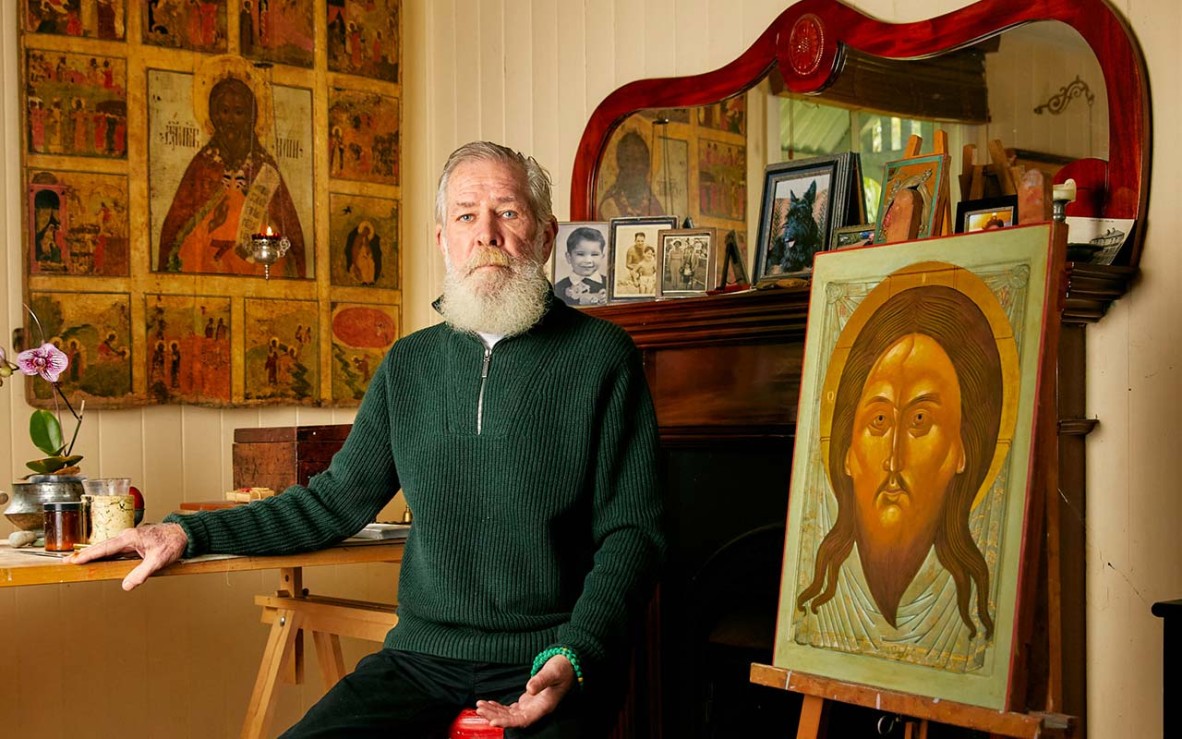
Ipswich contemporary artist Leonard Brown took art lessons with Betty Churcher during his boyhood in New Farm: "... she never patronised you — she gave you ridgy-didge experiences that were to last you a lifetime.” Photo by Joe Ruckli.
A reverence for art
Leonard Brown
Blake Prize-winning artist Leonard Brown describes painting as his great love.
“It is one of the very few things that we have always done, and that we are still doing,” Brown says in his Sourris collection interview. “It is one of the few areas of cultural continuity. There are not many things that you can say that about.”
Brown’s minimalist abstract oils are a world away from his Russian icon paintings, but each style demands the fastidious techniques he has honed since his teens. Examples of both are on display at Meet the artists, along with tools from his studio and his digital story.
Brown says his has been ‘a life of mentors’. One of his teachers at Saturday morning art classes as a boy was Betty Churcher AO, who went on to become the first and so far only female director of the National Gallery of Australia. “No matter what project I brought in on Saturday morning, Betty would embrace that project ... you would find yourself being taught the processes of oil painting, transparent and opaque glazing, while looking at a portrait of Rembrandt's mother, and Betty would translate the techniques of these sort of subtle glaze processes. So, as a child, she never patronised you — she gave you ridgy-didge experiences that were to last you a lifetime.”
Brown also thrived under the tutelage of distinguished artists such as Roy Churcher and Sam Fullbrook. After an education at New Farm steeped in the iconography of the Catholic church, Brown joined a community of Anglican Franciscan friars at age 19. In his 20s, he was ordained as Russian Orthodox priest and began his education in the complex imagery and methods of icon painting from Bishop Constantine, the Russian Orthodox Bishop of Brisbane.

Brisbane contemporary artist Sandra Selig is known for her intricate thread installations. Photo by Joe Ruckli.
Spiderwebs, science and space
Sandra Selig
Spiderwebs hold universes in the inspired world of Brisbane contemporary artist Sandra Selig.
Capturing delicate webs from her garden in fluorescent paint, Selig created two-dimensional clouds of light on black paper for her Universes series.
The cosmos is a source of fascination for Selig, whose experimental artforms intersect with science and music. She is best known for her magnificent large-scale thread installations, which have been described as a form of drawing in space.
In her Sourris collection interview, Selig says of the mathematical precision of her intricate thread installations: “The thing that I hate most about making these installations is measuring everything, and that's what I have to do to make them. It's more that I'm following what the material is really doing ... for example, I didn't research paraboloids and how they're made and how I might make that in 3 dimensions. It happened by accident as I was playing around with the material.”
Visitors to State Library’s Meet the artists exhibition can get a glimpse of the creative process for Selig’s Cut Poems, made from outdated science textbooks. A series of Selig’s ‘Wind-Assisted Drawings’ is also on show. Struggling in heavy winds while drawing the mangroves one of her favourite spots, Nudgee Beach, Selig says, “I just let the wind become part of what I was doing and I found that the paper moving against the pen created ... almost like a recording of the intensity of the wind. So it was almost like a reverse drawing where the pen was quite still, but the paper was being moved by the wind.”
Buy the limited-edition Meet the artists companion publication at the Library Shop.
Meet the artists
slq Gallery, level 2
State Library of Queensland, Cultural Centre, South Bank
Until 9 July 2023
State Library acknowledges the generosity of Marica Sourris and James C. Sourris AM for making the artist interview collection possible.
Comments
Your email address will not be published.
We welcome relevant, respectful comments.